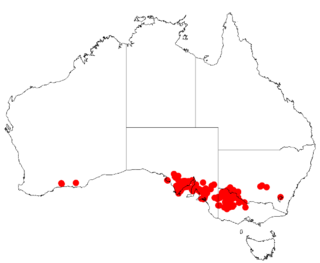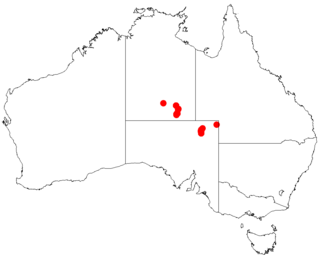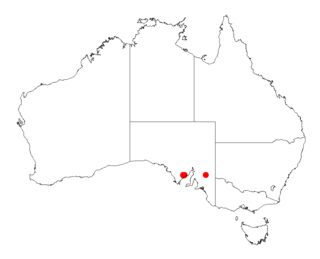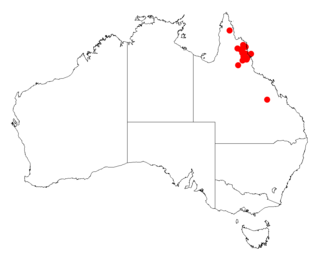
Acacia enterocarpa, commonly known as jumping jack wattle, is a shrub species that is endemic to eastern Australia.
Acacia anastomosa, also known as Carson River wattle, is a shrub belonging to the genus Acacia and the subgenus Juliflorae that is endemic to north western Australia.

Acacia conniana is a shrub belonging to the genus Acacia and the subgenus Juliflorae that is endemic to the southern coast of western Australia.

Acacia latior is a shrub belonging to the genus Acacia and the subgenus Juliflorae that is endemic to western Australia.

Acacia levata is a shrub belonging to the genus Acacia and the subgenus Juliflorae that is endemic to small arid area of western Australia.

Acacia lirellata is a shrub belonging to the genus Acacia and the subgenus Juliflorae that is endemic to south western Australia.

Acacia multispicata, commonly known as spiked wattle, is a shrub belonging to the genus Acacia and the subgenus Juliflorae that is endemic to south western Australia.
Acacia paula is a shrub belonging to the genus Acacia and the subgenus Juliflorae that is endemic to a small area of north western Australia.

Acacia ptychophylla is a shrub belonging to the genus Acacia and the subgenus Juliflorae the is endemic to arid areas of north western Australia.

Acacia resinimarginea is a tree or shrub belonging to the genus Acacia and the subgenus Juliflorae that is endemic to western Australia.

Acacia calantha is a shrub belonging to the genus Acacia and the subgenus Phyllodineae native to Queensland in Australia.

Acacia halliana is a shrub belonging to the genus Acacia and the subgenus Phyllodineae that is native to parts of south eastern Australia.

Acacia pedina is a tree or shrub belonging to the genus Acacia and the subgenus Phyllodineae native to eastern Australia.

Acacia pickardii, commonly known as Pickard's wattle or birds nest wattle, is a tree or shrub belonging to the genus Acacia and the subgenus Phyllodineae native to eastern Australia. It is listed as a vulnerable species according to Environment Protection and Biodiversity Conservation Act 1999.

Acacia praemorsa is a tree or shrub belonging to the genus Acacia and the subgenus Phyllodineae native to southern Australia. It is listed as vulnerable under the Environment Protection and Biodiversity Conservation Act 1999 and is regarded as endangered in South Australia.

Acacia linearifolia, commonly known as stringybark wattle or narrow-leaved wattle, is a shrub or tree of the genus Acacia and the subgenus Phyllodineae that is endemic to eastern Australia.

Acacia curranii, also known as curly-bark wattle, is a shrub belonging to the genus Acacia and the subgenus Juliflorae that is native to north eastern Australia. It is listed as vulnerable under the Environment Protection and Biodiversity Conservation Act 1999.

Acacia guymeri is a shrub belonging to the genus Acacia and the subgenus Juliflorae that is native to north eastern Australia. It was listed as vulnerable according to the Environment Protection and Biodiversity Conservation Act 1999 but was delisted in 2013. It is still listed as Vulnerable according to the Nature Conservation Act 1992 in Queensland.

Acacia striatifolia is a shrub or tree belonging to the genus Acacia and the subgenus Juliflorae that is native to north eastern Australia.
Acacia rubricaulis is a shrub belonging to the genus Acacia and the subgenus Juliflorae that is native to a small area in north eastern Australia.


















